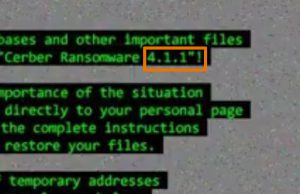
Yet another update has surfaced online concerning what appears to be one of the biggest ransomware viruses out there – the Cerber virus. Having a powerful scheme to redistribute it’s malicious files, the malware has become very sophisticated and it’s updates are not only on the surface as well. They also seem to include heavy modification of the Windows Registry entries related to the encrypted files. Since Cerber is a ransomware virus that aims to spread very fast users are advised not to open any e-mails that have archives and in them .hta or .wsf files because these are the methods the virus uses to infect computers. Anyone who has already been infected by the updated version of Cerber – 4.1.1 should immediately focus on eliminating the ransomware from your computer and learning more about the threat and how to restore your files by reading the information In this article.

Threat Summary
| Name | Cerber 4.1.1 |
| Type | Ransomware Virus |
| Short Description | This Cerber ransomware variant encrypts files with the RSA or AES ciphers adding four randomly generated A-Z 0-9 characters(ex. .z33f) as a file extension to the encrypted files and asks a ransom payoff for decryption. |
| Symptoms | Files are enciphered and become inaccessible by any type of software. A ransom note with instructions for paying the ransom shows as a “README.hta” file. |
| Distribution Method | Spam Emails, Email Attachments, File Sharing Networks, Malicious Executable in Torrent Trackers. |
| Detection Tool |
See If Your System Has Been Affected by malware
Download
Malware Removal Tool
|
| Data Recovery Tool | Windows Data Recovery by Stellar Phoenix Notice! This product scans your drive sectors to recover lost files and it may not recover 100% of the encrypted files, but only few of them, depending on the situation and whether or not you have reformatted your drive. |

Cerber 4.1.1 Infection Process Analysis
To better explain how the infection process by this variant of Cerber works, we will take you through it methodologically, based on an average scenario of infection by the 4.1.1 version of this nasty ransomware threat.
Distributing Cerber 4.1.0
Similar to the 4.1.0 version and any v4 variants of Cerber, the ransomware is spread yet again via files that are either malicious .hta(HTML) or .wsf(JavaScript) types of files contained in an archive that is uploaded in a phishing e-mail. The other most probable and reported method on how Cerber may spread is via fake URLs, for example the below displayed fake PayPal web page which may lead to a malicious web link containing a drive-by-download of Cerber:
Another scenario, similar to Locky’s latest iteration is if a user opens a malicious e-mal attachment on a spam e-mail such as the picture below displays:
These massive spam messages are believed to be sent out via the same distributors who are behind the same hacking team who distributed the massive Dridex malware. Once you open the archived file, in there you may find another file that contains absolutely the same name of the malware and may be either .hta or .wsf type of file, but .js and .html files could also be spotted. Here is how a malicious file may look upon opening the archive:
As soon as the inexperienced user opens the malicious file, it may immediately connect to the many remote hosts that are related to Cerber ransomware and download the malicious payload onto the victim’s computer, which consists of the following types of files detected by Malware Traffic Analysis:
Cerber-decryption-instructions.bmp (1,920,054 bytes)
page-from-joellipman.com-with-injected-script.txt (68,401 bytes)
pseudoDarkleech-RIGv-flash-exploit.swf (51,789 bytes)
pseudoDarkleech-RIGv-landing-page.txt (5,119 bytes)
pseudoDarkleech-RIGv-payload-Cerber.exe (347,878 bytes)
What appears to be RIG exploit kit may be used to cause a successful infection by Cerber ransomware. Malware researchers report the following infection process:
 Source: malware-traffic-analysis.net
Source: malware-traffic-analysis.net
Stage 2: Post Infection Activities
After infection, Cerber v4.1.1 ransomware uses a very specific tactic to attack the unsuspecting user. The ransomware modifies a registry value string in the following location, named MachineGuid with random symbols amongst which is the 4 A-Z, 0-9 file extension randomly generated and used to encrypt files. The registry string is located in the following sub-key:
After this has been done, Cerber 4.1.1. may create additional helper files, known as modules in the following Windows location:
But this is not the only location where the modules may be located. The virus may create modules in the crucial Windows folders as well, like:
- %AppData%
- %Common%
- %Temp%
- %Local%
- %Roaming%
- %System32%
- %Startup%
The malicious executables may contain very particular names, such as the date they are created, completely random names or the following reported names by all v4 version of Cerber.
In addition to the changes the Cerber 4.1.1 ransomware makes, another change is in the wallpaper that virus makes as well, which contains it’s version (4.1.1) in it:
The wallpaper contains URLs to Onion network hosts that lead to payment pages. We opened one particular URL which led us to the following web-page containing Captcha verification which is new for Cerber:
After we logged in the web page, we saw that the virus demands you to pay 0.1196 BTC (around 85 dollars) and the price will most likely double if the deadline of 5 days is not met:
The Cerber 4.1.1 ransomware also has very specific instructions that point to reputable web pages on how to convert money to BitCoin no matter where you are in the world:
“How to get «Cerber Decryptor»?
1. Create a Bitcoin Wallet (we recommend Blockchain.info)
2. Buy necessary amount of Bitcoins
Do not forget about the transaction commission in the Bitcoin network (≈ 0.0005).
Here are our recommendations:
btcdirect.eu – A good service for Europe
bittylicious.com – Get BTC via Visa / MC or SEPA (EU) bank transfer
localbitcoins.com – This service allows you to search for people that want to sell Bitcoins directly (WU, Cash, SEPA, Paypal, etc).
cex.io – Buy Bitcoins using Visa / Mastercard or Wire Transfer.
coincafe.com – It is recommended for the fast and easy service. Payment methods: Western Union, Bank of America, cash through FedEx, Moneygram, and/or wire transfer
bitstamp.net – Old and proven Bitcoin dealer
coinmama.com – Visa/Mastercard
btc-e.com – Bitcoins dealer (Visa/Mastercard, etc.)
Could not find Bitcoins in your region? Try searching here:
buybitcoinworldwide.com International catalog of Bitcoins exchanges
bitcoin-net.com – Another Bitcoins sellers catalog
howtobuybitcoins.info – International catalog of Bitcoins exchanges
bittybot.co/eu – A catalog for the European Union
3. Send 0.1196 to the following Bitcoin address:
13cM6XQZpL8xnCgqSyGDLcSn17oatA1hqM”
Cerber 4.1.1 even has the ability to decrypt one file for free. What is also new about Cerber ransomware is the direct messaging system the virus offers to the victims in case there is a problem:
Similar to other v4 Cerber iterations, 4.1.1 also changes the names of the encrypted files and adds 4 random symbols for a file extension to make them non-recognizable. Encrypted files appear like the following:
Cerber 4.1.1 – Conclusion, File Decryption and Removal
Since this type of Cerber 4.1.1 ransomware is as advanced as the other v4 variants, many researchers feel convinced that it will get even more updates very soon, because of the huge attention Cerber ransomware has been receiving by cyber-security researchers lately. Since the first version of Cerber was successfully decrypted, the cyber-criminals have not only created a virus that is very difficult to decipher but they have also used very powerful distribution methods as well. Security experts strongly advise every user who has been infected by this instance of Cerber to immediately remove it from their computer, instructions for which we have prepared below.
For maximum effectiveness during the removal of Cerber 4.1.1 ransomware, we also strongly advise you to focus on a more automatic approach, using an advanced anti-malware program, that will ensure all of the registry entries and other malicious files belonging to Cerber 4.1.1 are permanently gone. Doing this will also protect your computer from further infections by Cerber 4.1.1 or other malware in the future.
If you are looking for a method to decrypt your files, the best suggestion we could give you is to wait, since this malware has not yet been cracked by malware research experts. It may never be cracked, but it may also be successfully reverse engineered in the near future, because as long as there is code there are also bugs. After the virus files are cracked, malware researchers should be able to develop a decryptor and help you successfully decipher the files.
This is why we have provided the methods that should help you restore your files providing the opportunity comes in step “2. Restore files decrypted by Cerber 4.1.1”. They include web links to two of the major decryptor developers – Kaspersky and Emsisoft, which we advise you to follow regularly. We will also update our blog with article on decryption instructions as soon as there are ones developed for this iteration of Cerber so we advise you to follow this page as well.
- Step 1
- Step 2
- Step 3
- Step 4
- Step 5
Step 1: Scan for Cerber 4.1.1 with SpyHunter Anti-Malware Tool



Ransomware Automatic Removal - Video Guide
Step 2: Uninstall Cerber 4.1.1 and related malware from Windows
Here is a method in few easy steps that should be able to uninstall most programs. No matter if you are using Windows 10, 8, 7, Vista or XP, those steps will get the job done. Dragging the program or its folder to the recycle bin can be a very bad decision. If you do that, bits and pieces of the program are left behind, and that can lead to unstable work of your PC, errors with the file type associations and other unpleasant activities. The proper way to get a program off your computer is to Uninstall it. To do that:


 Follow the instructions above and you will successfully delete most unwanted and malicious programs.
Follow the instructions above and you will successfully delete most unwanted and malicious programs.
Step 3: Clean any registries, created by Cerber 4.1.1 on your computer.
The usually targeted registries of Windows machines are the following:
- HKEY_LOCAL_MACHINE\Software\Microsoft\Windows\CurrentVersion\Run
- HKEY_CURRENT_USER\Software\Microsoft\Windows\CurrentVersion\Run
- HKEY_LOCAL_MACHINE\Software\Microsoft\Windows\CurrentVersion\RunOnce
- HKEY_CURRENT_USER\Software\Microsoft\Windows\CurrentVersion\RunOnce
You can access them by opening the Windows registry editor and deleting any values, created by Cerber 4.1.1 there. This can happen by following the steps underneath:


 Tip: To find a virus-created value, you can right-click on it and click "Modify" to see which file it is set to run. If this is the virus file location, remove the value.
Tip: To find a virus-created value, you can right-click on it and click "Modify" to see which file it is set to run. If this is the virus file location, remove the value.
Before starting "Step 4", please boot back into Normal mode, in case you are currently in Safe Mode.
This will enable you to install and use SpyHunter 5 successfully.
Step 4: Boot Your PC In Safe Mode to isolate and remove Cerber 4.1.1





Step 5: Try to Restore Files Encrypted by Cerber 4.1.1.
Method 1: Use STOP Decrypter by Emsisoft.
Not all variants of this ransomware can be decrypted for free, but we have added the decryptor used by researchers that is often updated with the variants which become eventually decrypted. You can try and decrypt your files using the instructions below, but if they do not work, then unfortunately your variant of the ransomware virus is not decryptable.
Follow the instructions below to use the Emsisoft decrypter and decrypt your files for free. You can download the Emsisoft decryption tool linked here and then follow the steps provided below:
1 Right-click on the decrypter and click on Run as Administrator as shown below:

2. Agree with the license terms:

3. Click on "Add Folder" and then add the folders where you want files decrypted as shown underneath:

4. Click on "Decrypt" and wait for your files to be decoded.

Note: Credit for the decryptor goes to Emsisoft researchers who have made the breakthrough with this virus.
Method 2: Use data recovery software
Ransomware infections and Cerber 4.1.1 aim to encrypt your files using an encryption algorithm which may be very difficult to decrypt. This is why we have suggested a data recovery method that may help you go around direct decryption and try to restore your files. Bear in mind that this method may not be 100% effective but may also help you a little or a lot in different situations.
Simply click on the link and on the website menus on the top, choose Data Recovery - Data Recovery Wizard for Windows or Mac (depending on your OS), and then download and run the tool.
Cerber 4.1.1-FAQ
What is Cerber 4.1.1 Ransomware?
Cerber 4.1.1 is a ransomware infection - the malicious software that enters your computer silently and blocks either access to the computer itself or encrypt your files.
Many ransomware viruses use sophisticated encryption algorithms to make your files inaccessible. The goal of ransomware infections is to demand that you pay a ransom payment to get access to your files back.
What Does Cerber 4.1.1 Ransomware Do?
Ransomware in general is a malicious software that is designed to block access to your computer or files until a ransom is paid.
Ransomware viruses can also damage your system, corrupt data and delete files, resulting in the permanent loss of important files.
How Does Cerber 4.1.1 Infect?
Via several ways.Cerber 4.1.1 Ransomware infects computers by being sent via phishing emails, containing virus attachment. This attachment is usually masked as an important document, like an invoice, bank document or even a plane ticket and it looks very convincing to users.
Another way you may become a victim of Cerber 4.1.1 is if you download a fake installer, crack or patch from a low reputation website or if you click on a virus link. Many users report getting a ransomware infection by downloading torrents.
How to Open .Cerber 4.1.1 files?
You can't without a decryptor. At this point, the .Cerber 4.1.1 files are encrypted. You can only open them once they are decrypted using a specific decryption key for the particular algorithm.
What to Do If a Decryptor Does Not Work?
Do not panic, and backup the files. If a decryptor did not decrypt your .Cerber 4.1.1 files successfully, then do not despair, because this virus is still new.
Can I Restore ".Cerber 4.1.1" Files?
Yes, sometimes files can be restored. We have suggested several file recovery methods that could work if you want to restore .Cerber 4.1.1 files.
These methods are in no way 100% guaranteed that you will be able to get your files back. But if you have a backup, your chances of success are much greater.
How To Get Rid of Cerber 4.1.1 Virus?
The safest way and the most efficient one for the removal of this ransomware infection is the use a professional anti-malware program.
It will scan for and locate Cerber 4.1.1 ransomware and then remove it without causing any additional harm to your important .Cerber 4.1.1 files.
Can I Report Ransomware to Authorities?
In case your computer got infected with a ransomware infection, you can report it to the local Police departments. It can help authorities worldwide track and determine the perpetrators behind the virus that has infected your computer.
Below, we have prepared a list with government websites, where you can file a report in case you are a victim of a cybercrime:
Cyber-security authorities, responsible for handling ransomware attack reports in different regions all over the world:
Germany - Offizielles Portal der deutschen Polizei
United States - IC3 Internet Crime Complaint Centre
United Kingdom - Action Fraud Police
France - Ministère de l'Intérieur
Italy - Polizia Di Stato
Spain - Policía Nacional
Netherlands - Politie
Poland - Policja
Portugal - Polícia Judiciária
Greece - Cyber Crime Unit (Hellenic Police)
India - Mumbai Police - CyberCrime Investigation Cell
Australia - Australian High Tech Crime Center
Reports may be responded to in different timeframes, depending on your local authorities.
Can You Stop Ransomware from Encrypting Your Files?
Yes, you can prevent ransomware. The best way to do this is to ensure your computer system is updated with the latest security patches, use a reputable anti-malware program and firewall, backup your important files frequently, and avoid clicking on malicious links or downloading unknown files.
Can Cerber 4.1.1 Ransomware Steal Your Data?
Yes, in most cases ransomware will steal your information. It is a form of malware that steals data from a user's computer, encrypts it, and then demands a ransom in order to decrypt it.
In many cases, the malware authors or attackers will threaten to delete the data or publish it online unless the ransom is paid.
Can Ransomware Infect WiFi?
Yes, ransomware can infect WiFi networks, as malicious actors can use it to gain control of the network, steal confidential data, and lock out users. If a ransomware attack is successful, it could lead to a loss of service and/or data, and in some cases, financial losses.
Should I Pay Ransomware?
No, you should not pay ransomware extortionists. Paying them only encourages criminals and does not guarantee that the files or data will be restored. The better approach is to have a secure backup of important data and be vigilant about security in the first place.
What Happens If I Don't Pay Ransom?
If you don't pay the ransom, the hackers may still have access to your computer, data, or files and may continue to threaten to expose or delete them, or even use them to commit cybercrimes. In some cases, they may even continue to demand additional ransom payments.
Can a Ransomware Attack Be Detected?
Yes, ransomware can be detected. Anti-malware software and other advanced security tools can detect ransomware and alert the user when it is present on a machine.
It is important to stay up-to-date on the latest security measures and to keep security software updated to ensure ransomware can be detected and prevented.
Do Ransomware Criminals Get Caught?
Yes, ransomware criminals do get caught. Law enforcement agencies, such as the FBI, Interpol and others have been successful in tracking down and prosecuting ransomware criminals in the US and other countries. As ransomware threats continue to increase, so does the enforcement activity.
About the Cerber 4.1.1 Research
The content we publish on SensorsTechForum.com, this Cerber 4.1.1 how-to removal guide included, is the outcome of extensive research, hard work and our team’s devotion to help you remove the specific malware and restore your encrypted files.
How did we conduct the research on this ransomware?
Our research is based on an independent investigation. We are in contact with independent security researchers, and as such, we receive daily updates on the latest malware and ransomware definitions.
Furthermore, the research behind the Cerber 4.1.1 ransomware threat is backed with VirusTotal and the NoMoreRansom project.
To better understand the ransomware threat, please refer to the following articles which provide knowledgeable details.
As a site that has been dedicated to providing free removal instructions for ransomware and malware since 2014, SensorsTechForum’s recommendation is to only pay attention to trustworthy sources.
How to recognize trustworthy sources:
- Always check "About Us" web page.
- Profile of the content creator.
- Make sure that real people are behind the site and not fake names and profiles.
- Verify Facebook, LinkedIn and Twitter personal profiles.



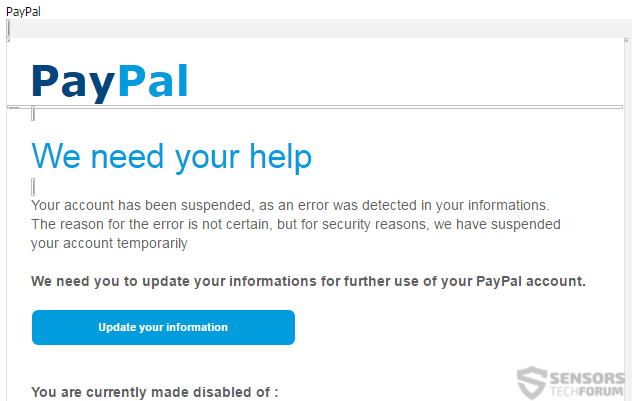



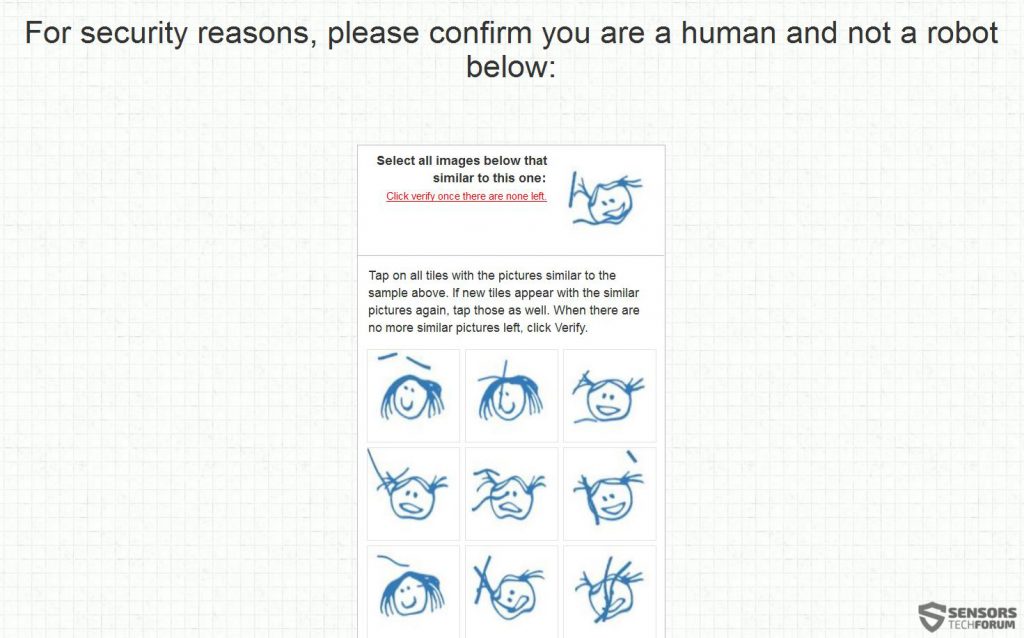
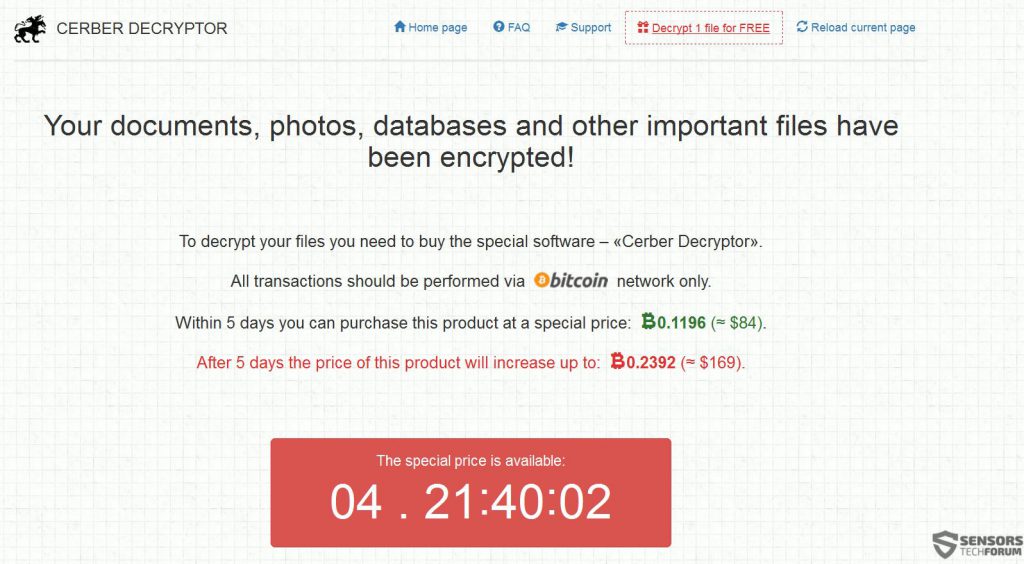
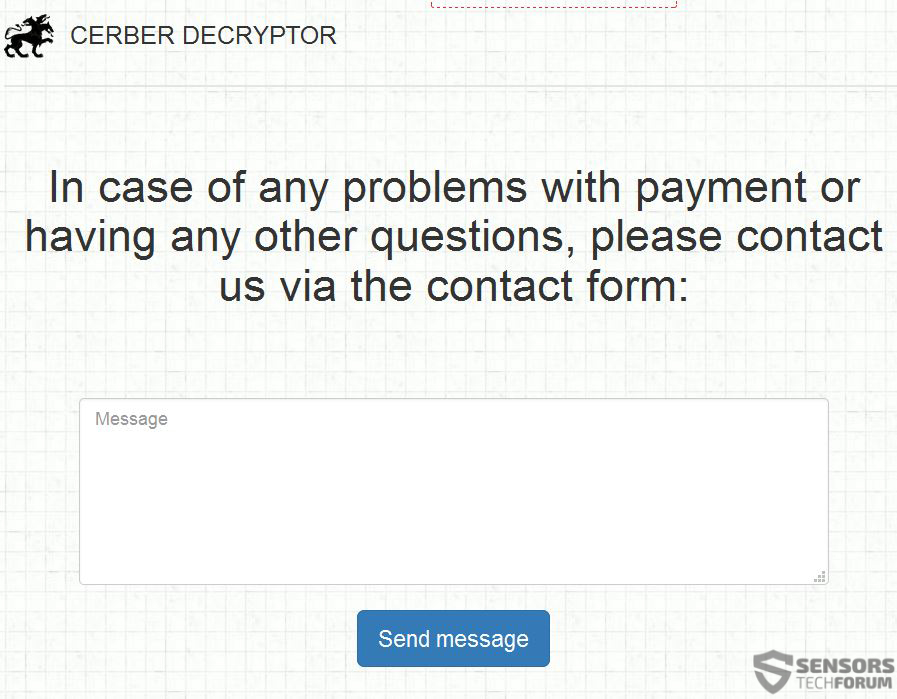


aún no se sabe nada de como decifrar el cerber 4.1.1???